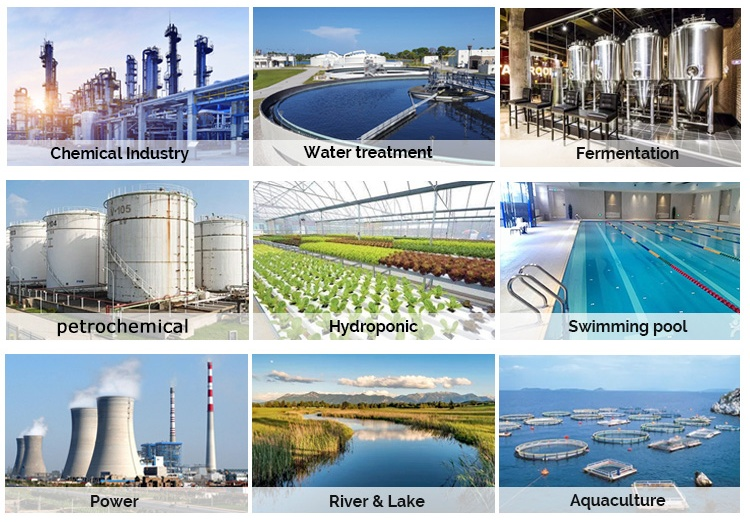ORP Meter Water Quality Sensor Digital Electrode Probe
Features
① High-Accuracy ORP Measurement
Employs an advanced ionic electrode method to deliver precise and stable ORP readings up to ±1000.0 mV with a resolution of 0.1 mV.
② Robust and Compact Design
Constructed with polymer plastic and a flat bubble structure, the sensor is durable, easy to clean, and resistant to damage.
③ Temperature Compensation Support
Allows both automatic and manual temperature compensation for improved accuracy under varying environmental conditions.
④ Modbus RTU Communication
Integrated RS485 interface supports the Modbus RTU protocol, enabling seamless integration with data loggers and control systems.
⑤ Anti-Interference and Stable Performance
Features an isolated power supply design that ensures data stability and strong anti-interference capability in noisy electrical environments.


Product Paramenters
| Product Name | ORP sensor |
| Model | LMS-ORP100 |
| Measurement method | Lonic electrode |
| Range | ±1000.0mV |
| Accuracy | 0.1mV |
| Power | 9-24VDC(Recommend12 VDC) |
| Voltage | 8~24 VDC(55mA/ 12V) |
| Material | Polymer Plastic |
| Size | 31mm*140mm |
| Output | RS-485, MODBUS protocol |
Application
1.Industrial Wastewater Treatment
In chemical, electroplating, or printing and dyeing industries, the sensor monitors ORP during wastewater oxidation/reduction processes (e.g., removing heavy metals or organic pollutants). It helps operators confirm whether the reaction is complete (e.g., sufficient oxidant dosage) and ensures treated wastewater meets discharge standards, reducing environmental pollution.
2.Aquaculture Water Quality Management
In fish, shrimp, or shellfish farms (especially recirculating aquaculture systems), ORP reflects the level of organic matter and dissolved oxygen in water. Low ORP often indicates poor water quality and high disease risk. The sensor provides real-time data, allowing farmers to adjust aeration or add microbial agents timely, maintaining a healthy aquatic environment and improving breeding survival rates.
3.Environmental Water Quality Monitoring
For surface water (rivers, lakes, reservoirs) and groundwater, the sensor measures ORP to assess ecological health and pollution status. For example, abnormal ORP fluctuations may indicate sewage inflow; long-term data tracking can also evaluate the effectiveness of ecological restoration projects (e.g., lake eutrophication control), providing support for environmental protection departments.
4.Drinking Water Safety Supervision
In water treatment plants, the sensor is used in raw water pretreatment, disinfection (chlorine or ozone disinfection), and finished water storage. It ensures disinfection is thorough (sufficient oxidation to inactivate pathogens) while avoiding excessive disinfectant residues (which affect taste or produce harmful by-products). It also supports real-time monitoring of tap water pipelines, safeguarding end-user drinking water safety.
5.Laboratory Scientific Research
In environmental science, aquatic ecology, or water chemistry laboratories, the sensor provides high-precision ORP data for experiments. For example, it can analyze the oxidation behavior of pollutants, study the relationship between temperature/pH and ORP, or verify new water treatment technologies—supporting the development of scientific theories and practical applications.
6.Swimming Pool & Recreational Water Maintenance
In public swimming pools, water parks, or spas, ORP (typically 650-750mV) is a key indicator of disinfection effectiveness. The sensor monitors ORP continuously, enabling automatic adjustment of chlorine dosage. This reduces manual monitoring efforts and prevents bacterial growth (e.g., Legionella), ensuring a safe and hygienic water environment for users.










